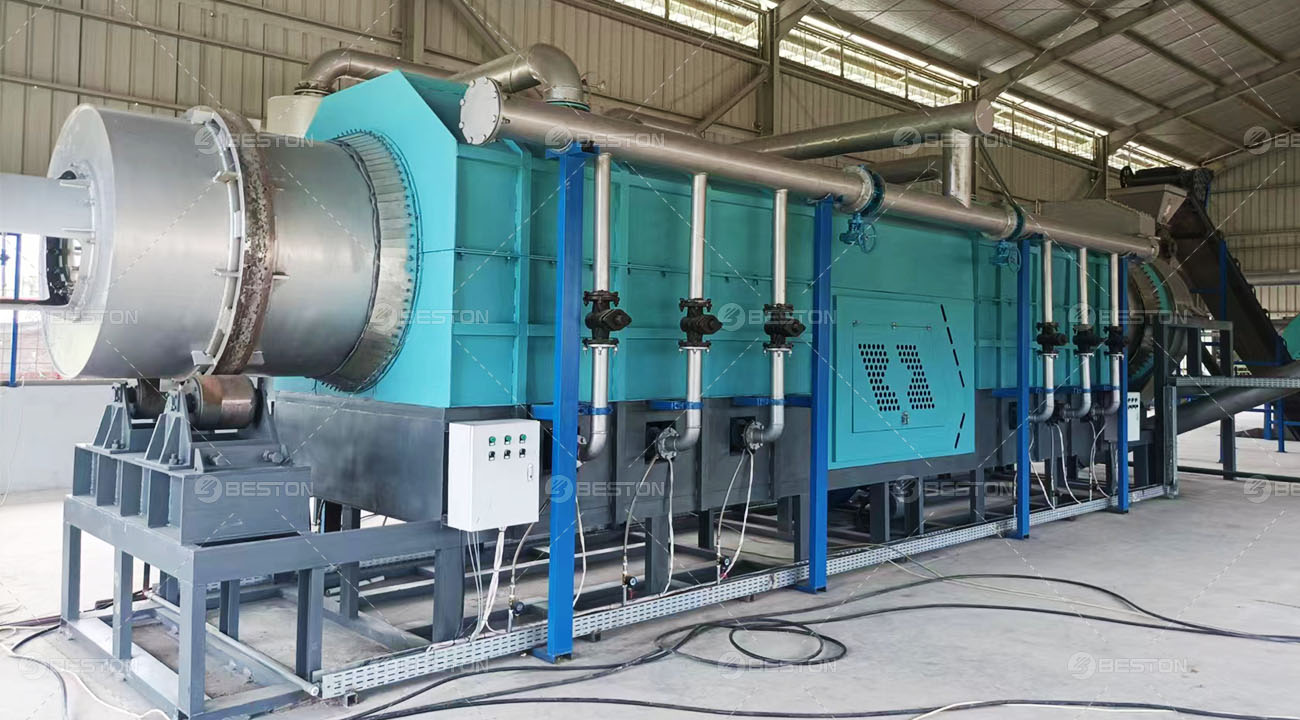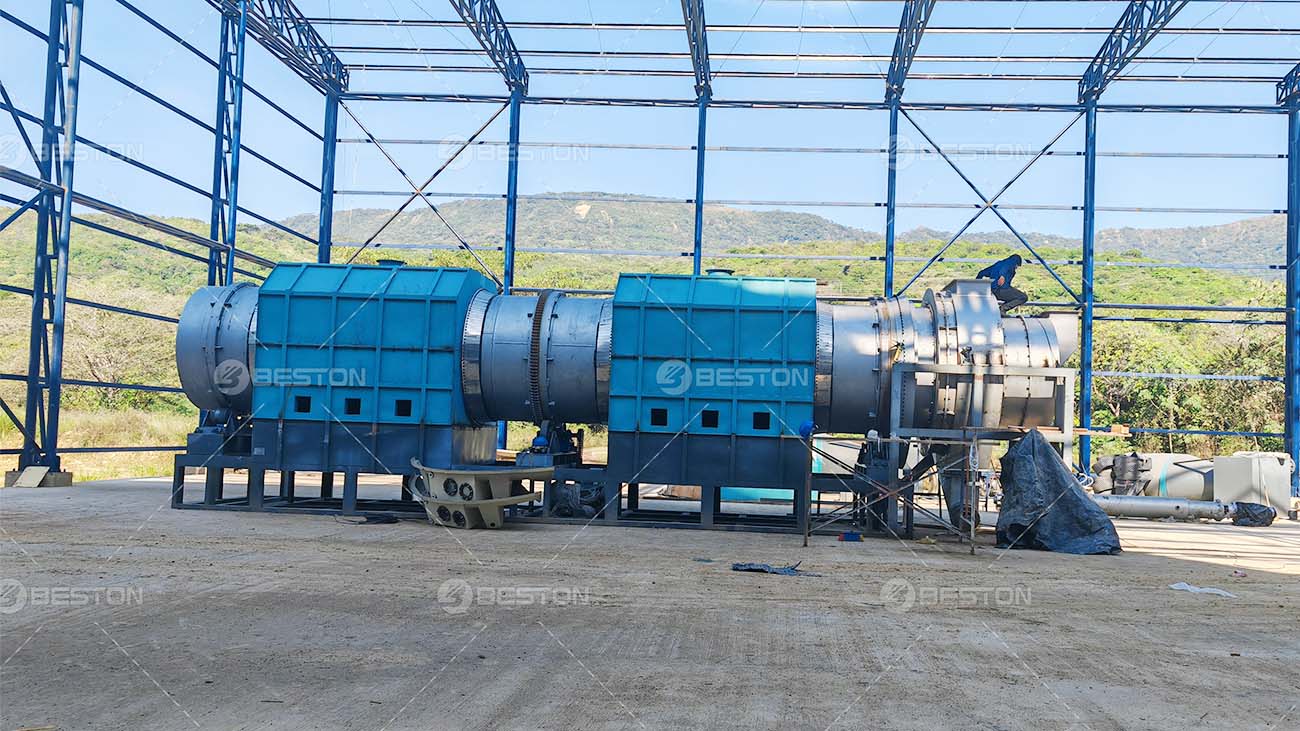In the intricate realm of sustainable practices, the transformative journey from wood processing waste to charcoal emerges as a beacon of environmental ingenuity. The deployment of cutting-edge wood to charcoal machines marks a pivotal shift in resource utilization, converging technology with eco-conscious initiatives.
Harnessing Residual Potential
The contemporary landscape of industrial wood processing often results in substantial waste, from bark to sawdust. The utilization of a wood to charcoal machine acts as an eco-virtuoso, turning this seemingly dispensable residue into a valuable resource – charcoal. This not only minimizes waste but also adds an additional dimension to the economic viability of wood processing operations.
Amid the intricate mechanisms of the wood to charcoal machine, sustainability takes center stage. The process involves the controlled conversion of wood waste into charcoal through a pyrolysis-based approach. Pyrolysis, a thermochemical decomposition of organic materials, manifests as a green alchemy where waste transforms into a valuable, energy-dense product.
Eco-Friendly Energy
One of the primary advantages of employing a wood to charcoal machine lies in the eco-friendly energy output. Charcoal, as a byproduct, boasts a higher energy density compared to raw wood. The controlled pyrolysis process ensures that the resulting charcoal retains a significant portion of the wood’s energy content while eliminating volatile compounds responsible for air pollution.
In the grand orchestra of sustainability, the transition from wood waste to charcoal harmonizes with the global movement towards cleaner energy sources. The charcoal produced becomes a greener alternative for heating, cooking, and industrial processes, contributing to a reduction in greenhouse gas emissions.
Mitigating Deforestation Pressures
In regions where wood serves as a primary energy source, the demand often exerts undue pressure on forests, leading to deforestation. The integration of sawdust charcoal machine provides a strategic solution to this predicament. By efficiently utilizing wood processing waste, the need for extensive logging diminishes, thereby mitigating deforestation pressures.
This advantage is not merely a theoretical proposition; it is a tangible step towards maintaining biodiversity, preserving ecosystems, and fostering a delicate equilibrium between human activities and nature. The resulting charcoal becomes a sustainable substitute, alleviating the burden on forests and ensuring their longevity.
Economic Viability and Job Creation
The adoption of sustainable practices through wood to charcoal machines not only aligns with environmental objectives but also presents a compelling case for economic viability. By repurposing wood waste, industries can reduce disposal costs and tap into a new revenue stream through the sale of charcoal.
Furthermore, the deployment and maintenance of wood to charcoal machines create a demand for skilled technicians, thus fostering job creation. This dual benefit of economic prosperity and employment opportunities bolsters the appeal of incorporating these innovative machines into wood processing facilities.
Technological Advancements in Wood to Charcoal Machines
The synergy between technology and sustainability finds a striking embodiment in the continuous advancements within the realm of wood to charcoal machines. Modern iterations boast enhanced efficiency, reduced energy consumption, and increased automation. These technological strides not only elevate the environmental impact but also make the adoption of such machines more attractive to industries seeking to align with green initiatives.
The incorporation of intelligent controls and monitoring systems ensures that the pyrolysis process within the charcoal maker machine remains optimized. This not only improves the quality of the produced charcoal but also minimizes the environmental footprint associated with the energy-intensive pyrolysis.
Overcoming Challenges with Innovation
While the advantages of utilizing a wood to charcoal machine for sustainability are substantial, challenges persist. However, the innovation within the industry is relentless. Researchers and engineers continually strive to address concerns such as emissions during pyrolysis, ensuring that the environmental impact remains minimal.
Moreover, ongoing research aims to optimize the pyrolysis process to yield higher-quality charcoal and explore potential byproducts that could find applications in various industries. This commitment to innovation reinforces the notion that the journey from wood waste to charcoal is not a stagnant path but an evolving landscape of possibilities.

The Bottom Line: A Greener Tomorrow
In conclusion, the advantages of employing wood to charcoal machines in the utilization of wood processing waste reverberate on multiple fronts. From mitigating deforestation pressures to providing eco-friendly energy alternatives, the environmental and economic benefits are palpable. You can consult Beston Group for more solutions.
The journey from wood waste to charcoal encapsulates the essence of sustainable practices, where technology and environmental consciousness intertwine. As industries embrace these innovations, the narrative shifts from resource exploitation to responsible resource management, heralding a greener tomorrow. The sustainability inherent in the process not only transcends economic cycles but also lays the foundation for a harmonious coexistence between industrial progress and ecological preservation.